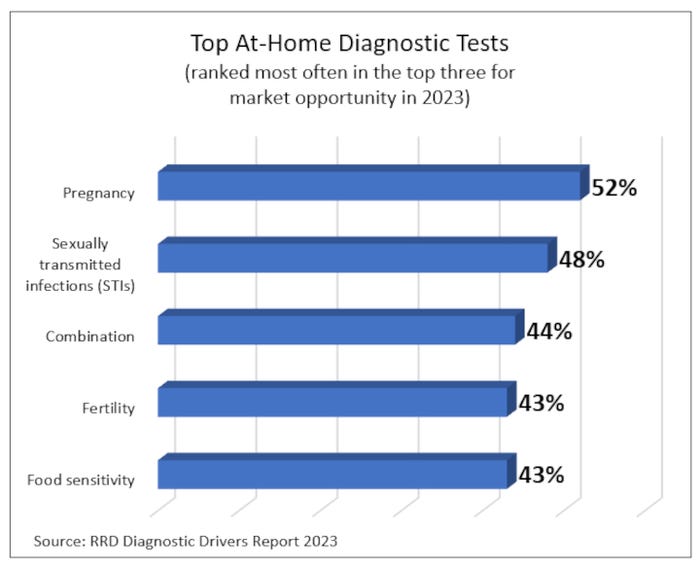Survey Reports Rapid Growth of At-Home Diagnostic Test Kits
Consumer interest and improved outcomes are among key drivers, but economic downturn and supply chain issues still pose challenges.

According to a recent study by R.R. Donnelley & Sons Co. (RRD), the medical packaging industry is seeing an increased demand for diagnostic test kits delivered to consumers’ homes — a trend fueled by consumerization as well as COVID-19.
Of the 200 supply chain professionals participating in the survey, 97% noted an increase in demand for at-home testing over the last two years. Of that group, 95% felt confident about meeting this demand, with the same percentage indicating that they are looking for the right outsourcing partners to do so.
Comfort and convenience drive growth.
Routine COVID-19 testing has made consumers more comfortable with self-testing at home and more accustomed to the convenience it affords. As a result, testing for a range of medical concerns — from fertility and food sensitivity to sexually transmitted infections (STIs) — can now be done in the privacy of their homes.
Findings from the Diagnostic Drivers Report show promising growth for emerging diagnostic categories and combination tests that test for more than one condition. In addition to pregnancy (52%) and combination tests (44%), STI (48%), food sensitivity (43%), and fertility tests (43%) ranked most often in the top three for market opportunity in 2023.

Health plans approve at-home testing.
While consumer convenience (21%) and privacy (20%) are key drivers of the growing demand for at-home tests, the trend is being driven primarily by increased interest from health plans (25%) in offering this type of product to members.
According to John Marrow, president of RRD Supply Chain Solutions, these health plans, also known as health insurance companies, are interested in offering members at-home diagnostic testing for several reasons:
• heightened consumer interest and comfort with self-testing;
• the association between preventative care measures (like convenient and simple diagnostic testing) and better health outcomes for members; and
• lower service costs compared to traditional laboratory services.
“Ultimately, health plans have found at-home diagnostic testing to be an avenue to improve the member experience and health outcomes without incurring extra costs downstream,” says Marrow. “For that reason, we expect health plans and manufacturers to continue to invest in advancement and growth of at-home diagnostics regardless of the economic climate.”
Meeting supply chain challenges.
Inflation and economic downturn may emerge as key challenges supply chain leaders face this year. According to the report, the last two years of supply chain volatility has created disruptions and transportation delays for 40% of respondents.
On the bright side, many organizations see opportunity in economic uncertainty: Nearly eight in 10 organizations (79%) view an economic recession or downturn as a strategic opportunity to realign their supply chain activities, and 66% are moving outsourcing, manufacturing, and fulfillment physically closer to customers and end markets.
“While not a straightforward process, the benefits of moving outsourcing, final product completion, and fulfillment closer to customers are numerous — namely the promise of improved supply chain resilience,” notes Marrow. “Companies can take advantage of rapid freight channels, beneficial trade agreements, quick turnaround times, and increase personalization, all while decreasing risk.”
He concludes that third-party organizations with global expertise in realigning supply chains and nearshoring/onshoring can make the process easier.
About the Author(s)
You May Also Like




